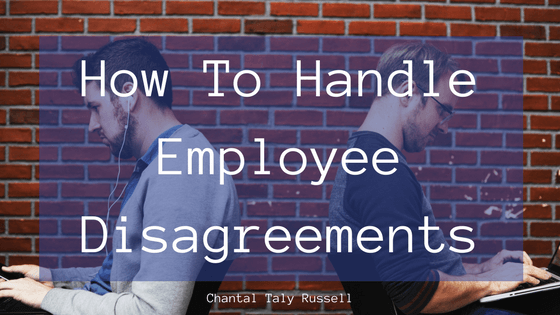It’s an unfortunate problem, but as an HR manager, you’ve seen it before. A disagreement between two employees has gotten so out of hand that you have been asked to step in and help to resolve the issue. While this ask is within your requirements as an HR manager, it doesn’t make it any easier to deal with, especially if this is a recurring issue between the two employees in question. There are many ways to handle such an act, but sometimes it’s good to refresh your tactics if things are getting resolved quickly. Below, I’ve highlighted a few great ways to deal with employees who many not be keen on dealing with each other.
The Passive Approach
If you’re confident that an argument won’t turn physical, it can be extremely helpful to encourage your employees to work out the disagreement on their own. You can do this by either acting as a mediator or by putting them in a room together until they can apologize to each other, but one thing has to be made very clear: you are not their parent. Remind your employees of that if a situation like this occurs, and remember that there is only so much that you can do. Your job is to maintain a working office environment, and sometimes that includes putting out some fires, but no employee should look to you to solve their problems. By staying firmly in the middle and making the employees do most of the work, you can spare yourself from other employees accusing you of favoritism or making the situation worse.
Getting to Know You
Many companies have seen success with coaching programs within their respective industries. Coaching and mentoring can directly attribute to a happier and more understanding work environment. It’s important to get to know your employees and how they deal with conflict and celebration alike. Everyone is different, and it’s very likely that not everyone is going to mesh right with everyone else in the office. Try to avoid conflicts before they happen by gaining an understanding of the differences within your employee base. Knowing who may not work well with who, or which employee may benefit the most by working with another can save you a lot of conflict in the future.
This technique also offers an added benefit not only of respecting differences of personality and work ethic, but also outlining office boundaries. By building that trust through mentoring and coaching, you can calmly approach someone before a bad habit starts really getting in the way of their work and the office environment. Since you’ve taken the time to notice the pattern and build trust through mentorship, your employee will take your advice to heart and they’ll respect the boundaries of the office more as well.
Listen Without Punishment
While it may seem like a page out of a parenting book, listening is a crucial part in understanding and handling workplace conflict. When deep conflict arises, chances are high that there are many layers to uncover before getting to the root cause. Listen to your employee and acknowledge what they’re saying. Showing them that you understand what they view the conflict to be will open up a door of trust that will show you both to a solution. To truly recover trust, it’s best not to threaten suspension or any other type of discipline. If there’s a chance an employee will get in trouble for sharing their thoughts, they’ll just continue to stew, or worse, leave.
What are the techniques that have worked best for your business? Comment below and share them with me! For more tips and advice to better your HR department, stay tuned for more blogs.

